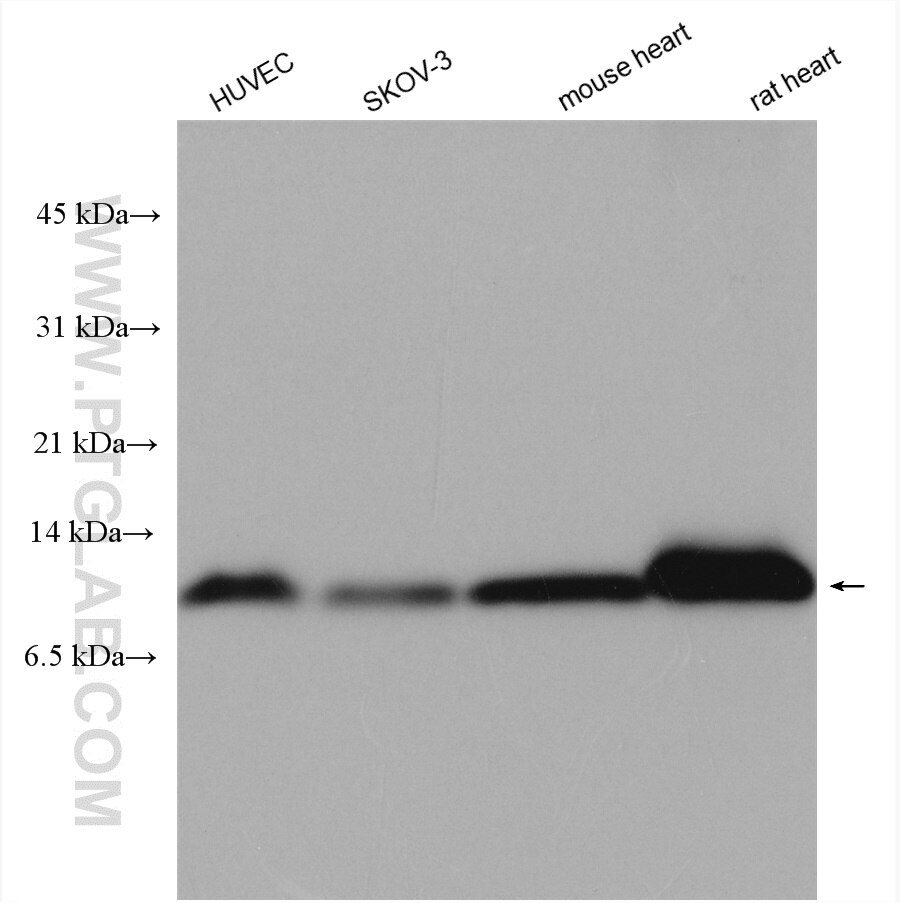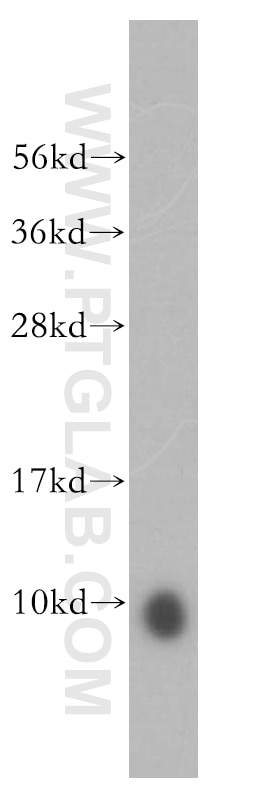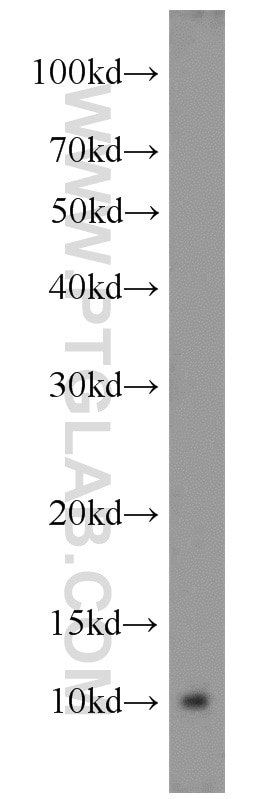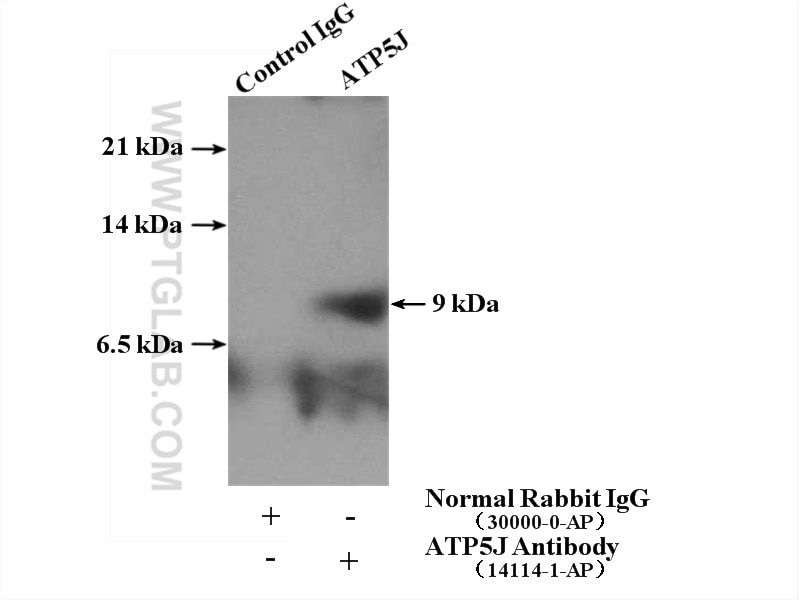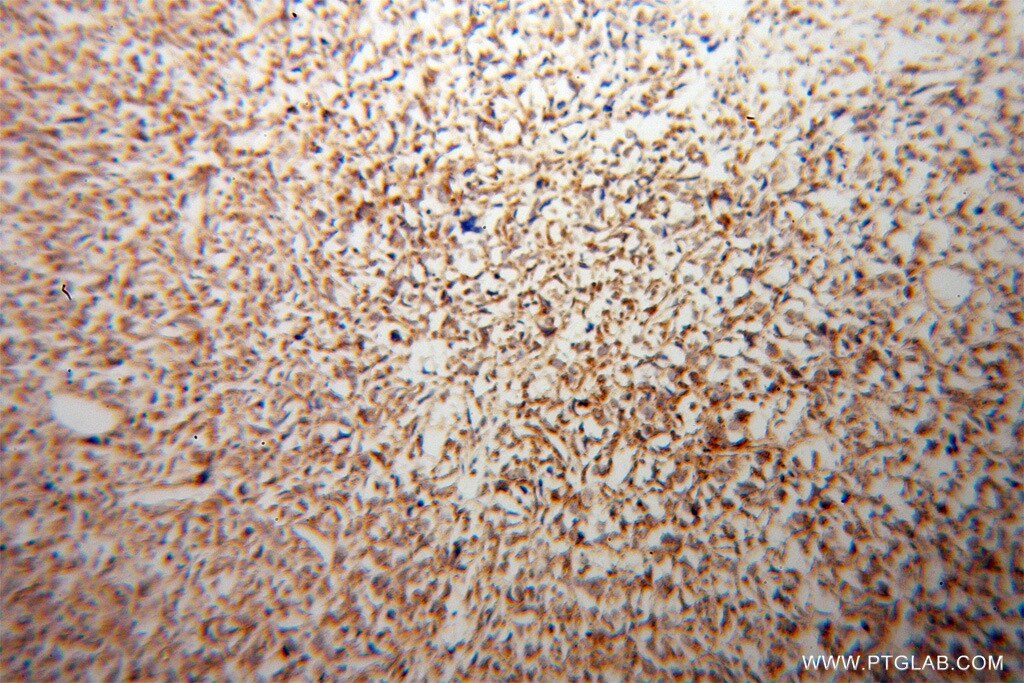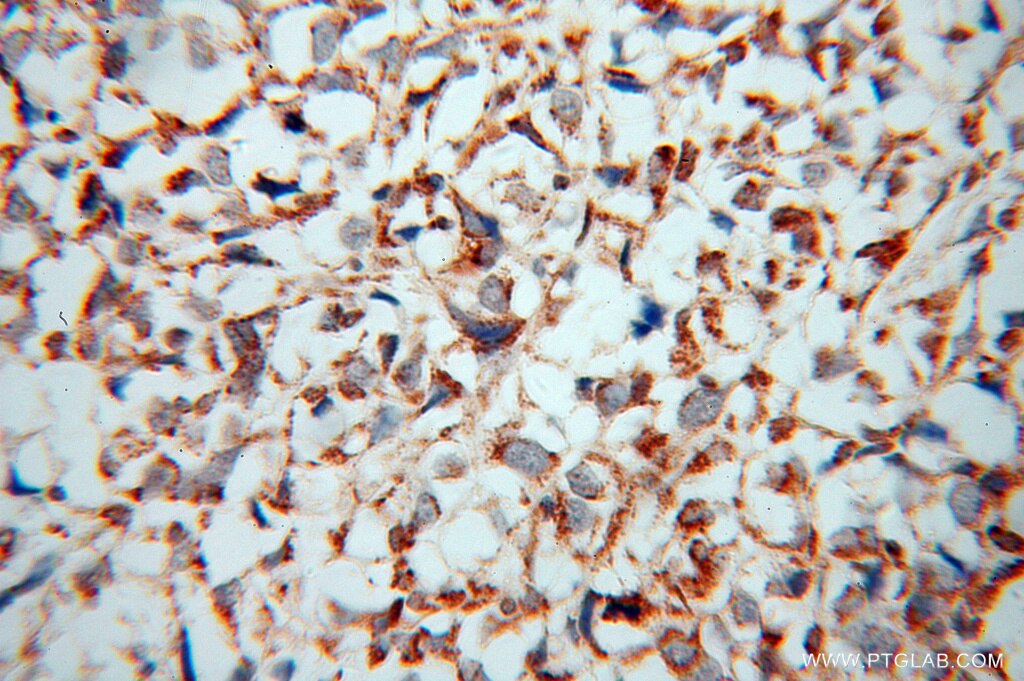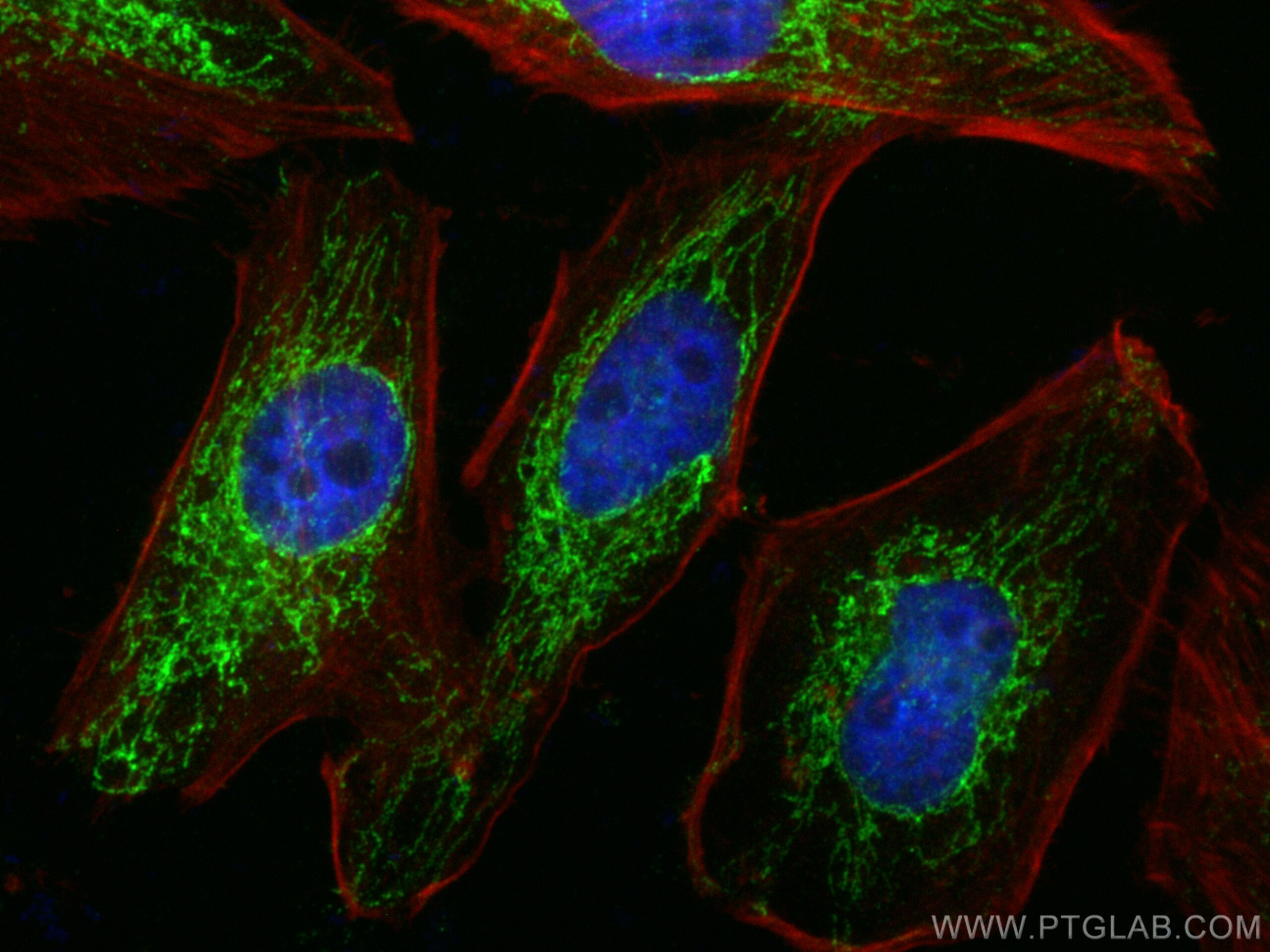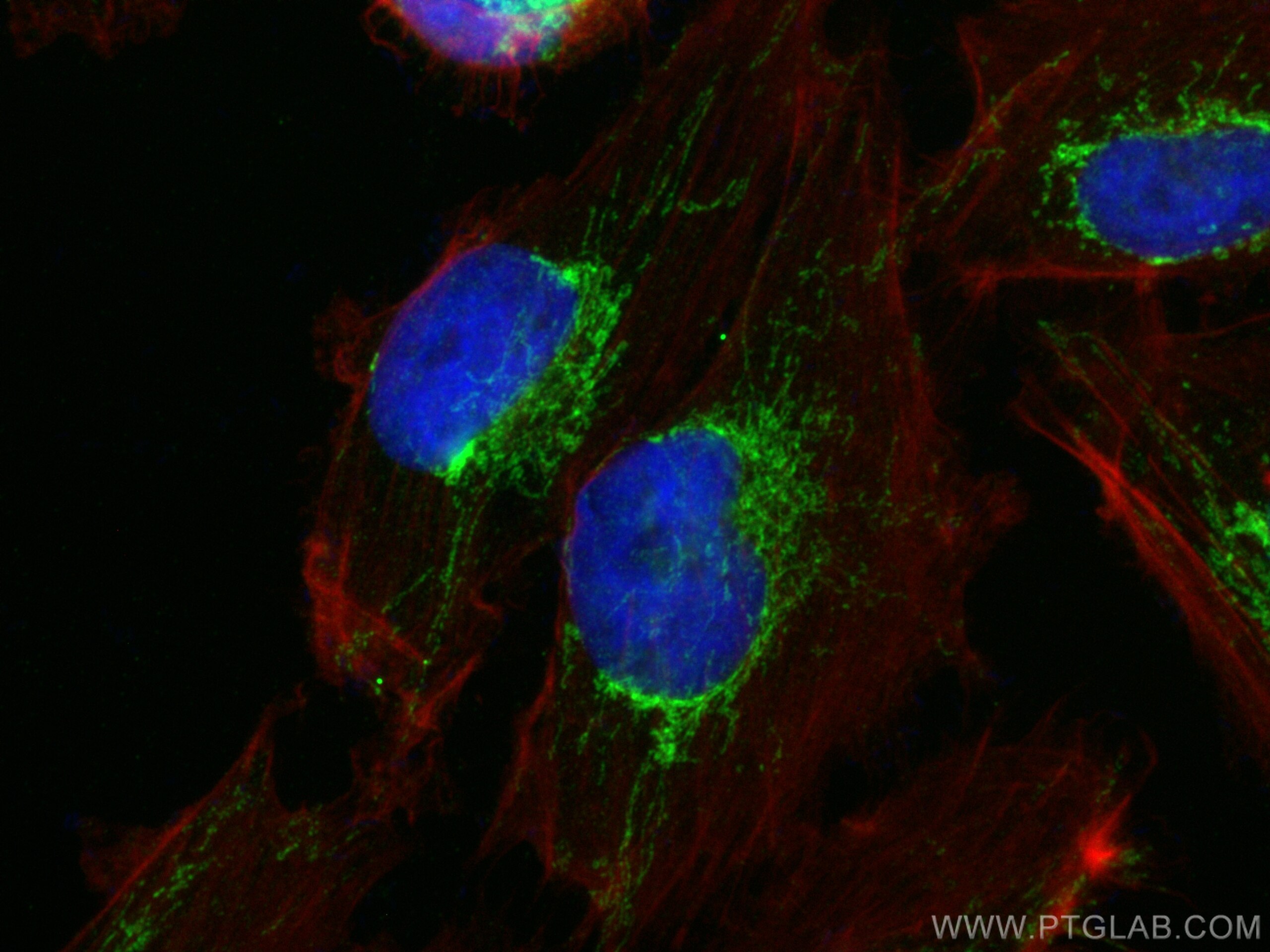ATP5J Polyklonaler Antikörper
ATP5J Polyklonal Antikörper für WB, IHC, IF/ICC, IP, ELISA
Wirt / Isotyp
Kaninchen / IgG
Getestete Reaktivität
human, Maus, Ratte und mehr (1)
Anwendung
WB, IHC, IF/ICC, IP, ELISA
Konjugation
Unkonjugiert
Kat-Nr. : 14114-1-AP
Synonyme
Geprüfte Anwendungen
| Erfolgreiche Detektion in WB | HUVEC-Zellen, humanes Herzgewebe, Mauslebergewebe, SKOV-3-Zellen |
| Erfolgreiche IP | HEK-293-Zellen |
| Erfolgreiche Detektion in IHC | humanes Osteosarkomgewebe Hinweis: Antigendemaskierung mit TE-Puffer pH 9,0 empfohlen. (*) Wahlweise kann die Antigendemaskierung auch mit Citratpuffer pH 6,0 erfolgen. |
| Erfolgreiche Detektion in IF/ICC | HeLa-Zellen, U-251-Zellen |
Empfohlene Verdünnung
| Anwendung | Verdünnung |
|---|---|
| Western Blot (WB) | WB : 1:500-1:2000 |
| Immunpräzipitation (IP) | IP : 0.5-4.0 ug for 1.0-3.0 mg of total protein lysate |
| Immunhistochemie (IHC) | IHC : 1:20-1:200 |
| Immunfluoreszenz (IF)/ICC | IF/ICC : 1:200-1:800 |
| It is recommended that this reagent should be titrated in each testing system to obtain optimal results. | |
| Sample-dependent, check data in validation data gallery | |
Veröffentlichte Anwendungen
| WB | See 4 publications below |
Produktinformation
14114-1-AP bindet in WB, IHC, IF/ICC, IP, ELISA ATP5J und zeigt Reaktivität mit human, Maus, Ratten
| Getestete Reaktivität | human, Maus, Ratte |
| In Publikationen genannte Reaktivität | human, Kaninchen, Maus, Ratte |
| Wirt / Isotyp | Kaninchen / IgG |
| Klonalität | Polyklonal |
| Typ | Antikörper |
| Immunogen | ATP5J fusion protein Ag5263 |
| Vollständiger Name | ATP synthase, H+ transporting, mitochondrial F0 complex, subunit F6 |
| Berechnetes Molekulargewicht | 13 kDa |
| Beobachtetes Molekulargewicht | 9 kDa |
| GenBank-Zugangsnummer | BC066310 |
| Gene symbol | ATP5J |
| Gene ID (NCBI) | 522 |
| Konjugation | Unkonjugiert |
| Form | Liquid |
| Reinigungsmethode | Antigen-Affinitätsreinigung |
| Lagerungspuffer | PBS with 0.02% sodium azide and 50% glycerol |
| Lagerungsbedingungen | Bei -20°C lagern. Nach dem Versand ein Jahr lang stabil Aliquotieren ist bei -20oC Lagerung nicht notwendig. 20ul Größen enthalten 0,1% BSA. |
Hintergrundinformationen
ATP5J, also known as coupling factor 6 (CF6), is a soluble integral component of mitochondrial ATP synthase. Mitochondrial ATP synthase is a multi-subunit membrane-bound enzyme that catalyzes the synthesis of ATP by utilizing a proton electrochemical gradient. It consists of three domains, namely the extrinsic and intrinsic membrane domains (F1 and F0, respectively) joined by a stalk. CF6 is one of the subunits in the stalk and an essential component for energy transduction. Recently CF6 has also been reported to play a crucial role in the development of INS resistance and hypertension. CF6 is first synthesized as an immature form in the cytosol, then transported to the mitochondria by an import signal peptide and becomes an active form with the signal peptide cleaved. Western blot analysis of CF6 demonstrates a single band around 9 kDa to 12 kDa in various tissues including heart, liver, brain and HUVEC (human umbilical vein endothelial cells).
Protokolle
| PRODUKTSPEZIFISCHE PROTOKOLLE | |
|---|---|
| WB protocol for ATP5J antibody 14114-1-AP | Protokoll herunterladen |
| IHC protocol for ATP5J antibody 14114-1-AP | Protokoll herunterladenl |
| IF protocol for ATP5J antibody 14114-1-AP | Protokoll herunterladen |
| IP protocol for ATP5J antibody 14114-1-AP | Protokoll herunterladen |
| STANDARD-PROTOKOLLE | |
|---|---|
| Klicken Sie hier, um unsere Standardprotokolle anzuzeigen |
Publikationen
| Species | Application | Title |
|---|---|---|
Front Endocrinol (Lausanne) Androgen Excess Induced Mitochondrial Abnormality in Ovarian Granulosa Cells in a Rat Model of Polycystic Ovary Syndrome. | ||
Arch Pharm Res Overexpressing microRNA-203 alleviates myocardial infarction via interacting with long non-coding RNA MIAT and mitochondrial coupling factor 6. | ||
J Proteomics Congenital cataracts affect the retinal visual cycle and mitochondrial function: A multi-omics study of GJA8 knockout rabbits | ||
Adv Sci (Weinh) Phosphorylation of POU3F3 Mediated Nuclear Translocation Promotes Proliferation in Non-Small Cell Lung Cancer through Accelerating ATP5PF Transcription and ATP Production | ||
Proc Natl Acad Sci U S A The mitochondrial ATP synthase is a negative regulator of the mitochondrial permeability transition pore |
Rezensionen
The reviews below have been submitted by verified Proteintech customers who received an incentive for providing their feedback.
FH P (Verified Customer) (05-16-2024) | Good
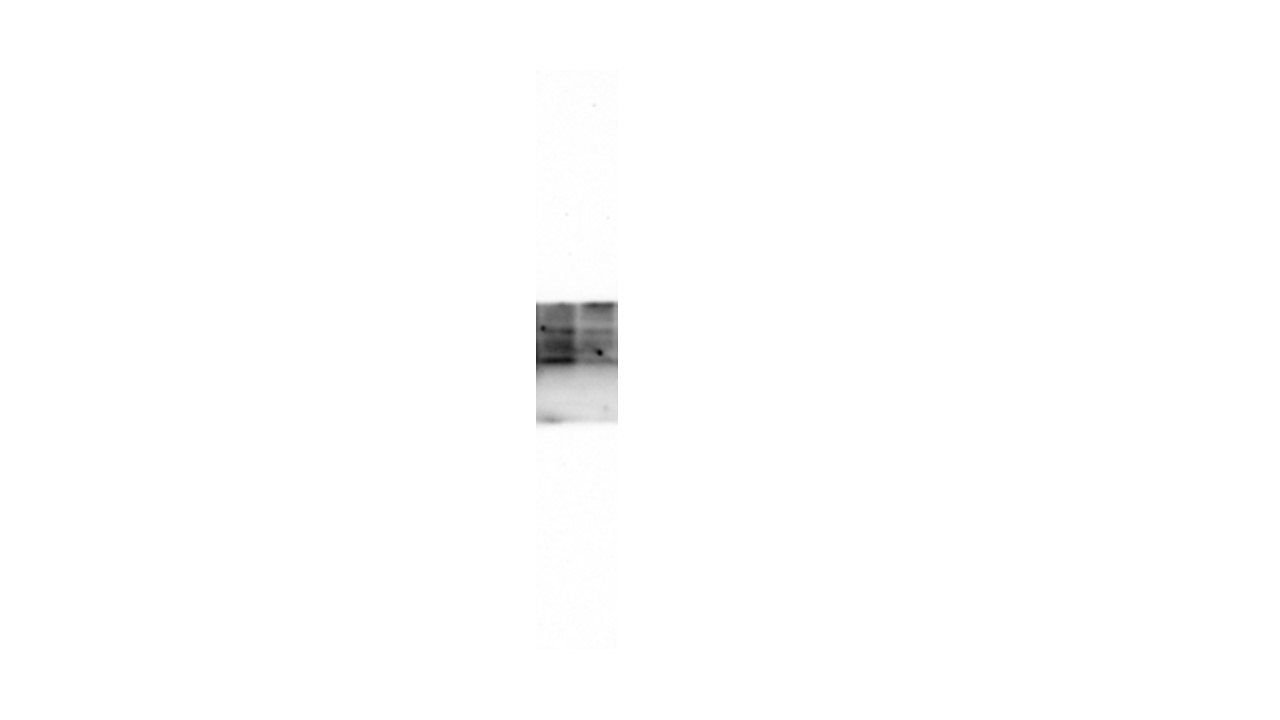 |
